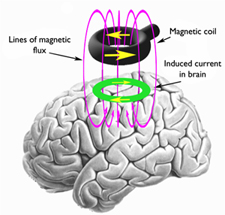

| ||||||
| HOME | RESEARCH | PUBLICATIONS | PARTICIPATE IN AN EXPERIMENT | JOIN THE LAB | ||
|
||
| We are always seeking volunteers who would participate in one of our experiments. After all, our research can only happen thanks to volunteers who generously give their time to take part in our experiments. Not only will your time and effort be greatly appreciated, but you may receive compensation for your time. Any data collected will be kept confidential and will be used only for research purposes. If you are interested in being a participant, please send an email with "Participant" in the subject line to steve.prime@usask.ca. Please include your name, age, and phone number. We will arrange an appointment for you to come by the Lab. If you are an undergraduate student in a 100 or 200 level psychology course, you might be able to earn course credit by participating in an experiment. As your instructor about it. To sign up for an experiment and receive credit, use the on-line sign-up system at https://usask.sona-systems.com |
Please remember: |
|
| The relevance of our work The human brain is an incredibly complex biological system, producing our thoughts, memories, feelings, and experiences of the world. Psychologists and neuroscientists are only now scratching the surface in an attempt to better understand how the brain works. The goal of our research in the Neurocognition & Psychophysics Lab is to further our understanding of the brain and its functional architecture underlying cognition and perception. Not only will our research contribute to our basic knowledge of how the brain works, but our research will also be able to inform more applied research in such areas as driving and attention, developing more effective human-machine interfaces, and enhancing perceptual learning skills. Any field in which it is important to understand, predict, or influence human behaviour, cognitive neuroscience will play an increasing role. |
||
| What is transcranial magnetic stimulation? Transcranial magnetic stimulation (TMS) is a safe and noninvasive brain mapping technique used by cognitive neuroscientists to study how the brain works. Researchers use TMS to briefly and safely change focal regions of brain activity and measure changes in behaviour or cognitive performance that this causes. TMS therefore allows researchers to directly assess the causal relationship between brain and behaviour. TMS has been used in a growing number of laboratories worldwide since 1985. Clear guidelines on the safe and ethical use of TMS have been published and will be followed in all research. There are no known adverse health effects from receiving TMS at the parameters that we use in this lab. All our studies follow the international TMS safety guidelines. All lab members who perform studies involving TMS have received formal training in administering this technique. |
MagStim Rapid 2 TMS system |
|
| How does TMS work? TMS is based on the principle of electromagnetic induction. TMS involves applying a magnetic field over the scalp to induce a very weak electrical field in a focal region of the brain. This electrical field changes the neural activity in that targeted brain region, which usually results in temporarily interfering with cortical function. Changes to performance in a cognitive task during stimulation (e.g., slower reaction time or less perceptual accuracy) allows us to establish a functional relationship between the stimulated brain area and the putative cognitive processes involved in performing that task. TMS can be administered either 'online' or 'offline'. Online TMS means stimulation is applied while a participant is performing an experiment. Offline TMS means stimulation is applied for some variable amount of time before a participant performs an experiment. Depending on how TMS is applied, the stimulated cortex can be either facilitated or inhibited, but either way the effect is only temporary. |
 What TMS does |
|
What to expect if you are participating in a TMS study
|
||
| The Neurocognition and Psychophysics Laboratory, Department of Psychology, University of Saskatchewan | ||